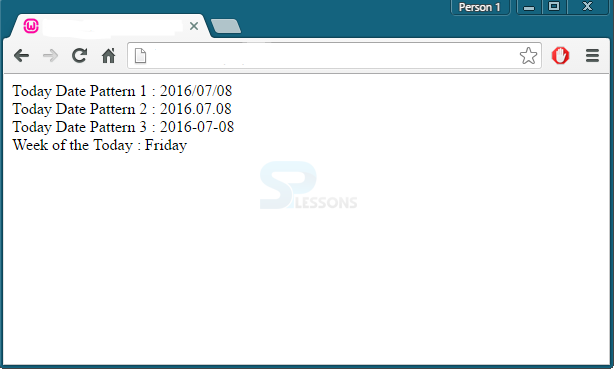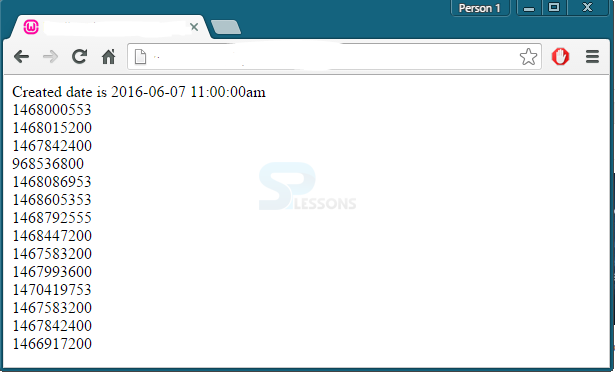 Description
Description
PHP Date chapter gives introduction to Timestamp initially and explains clearly about Time and Data Functions. Normally, Timestamp in UNIX will be the number of seconds that have been passed since January 1, 1970. Currently, the timestamp is 1467952558.But for every second, this time keep changing which increases the time number when the page is refreshed.
PHP date() function follows and formats the timestamp with high readability to give exact date and time.
 Syntax
Syntax
date(format,timestamp)
format - Specifies the format of the timestamp and is mandatory.
timestamp- Specifies a timestamp. it's default value is current date and time and is optional.
Characters used commonly:
- d - denotes the day of the month (01 to 31)
- m - denotes a month (01 to 12)
- Y - denotes a year (in 4 digits)
- l (lowercase 'L') - denotes the day of the week
 Example
Example
 Description
Description
The characters that are most commonly used for time are:
- h - 12-hour format(01 to 12)
- i - Minutes by including zeros (00 to 59)
- s - Seconds by including zeros (00 to 59)
- a - Lowercase Ante meridiem and Post meridiem (am or pm)
 Example
Example
 Description
Description
The strtotime() function takes human readable language datetime description like English and converts it into a timestamp. By this,it is eady to determine "last Friday" or "past week" without the help of time() function and large math code.
 Example
Example
[php]
<!DOCTYPE html>
<html>
<body>
<?php
$a=strtotime("11:00am June 07 2016");
echo "Created date is " . date("Y-m-d h:i:sa", $a)."<br/>";
echo strtotime("now") . "<br />";
echo strtotime("tomorrow") . "<br />";
echo strtotime("yesterday") . "<br />";
echo strtotime("10 September 2000") . "<br />";
echo strtotime("+1 day") . "<br />";
echo strtotime("+1 week") . "<br />";
echo strtotime("+1 week 2 days 4 hours 2 seconds") . "<br />";
echo strtotime("next Thursday") . "<br />";
echo strtotime("last Monday") . "<br />";
echo strtotime("4pm + 2 Hours") . "<br />";
echo strtotime("now + 2 fortnights") . "<br />";
echo strtotime("last Monday") . "<br />";
echo strtotime("2pm yesterday") . "<br />";
echo strtotime("7am 12 days ago") . "<br />";
?>
</body>
</html>
[/php]
 Points
Points
- Timestamp is number of seconds that have been passed since January 1, 1970.
- Characters used in date function are d,m,Y,l,/,. and -.
- Characters used in date function are h,s,i and a.
- strtotime() converts human readable language datetime description to timestamp.






